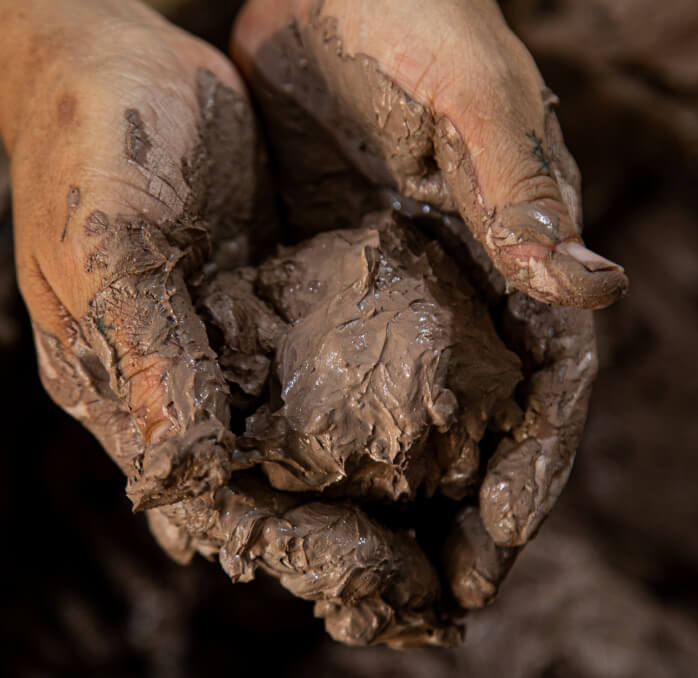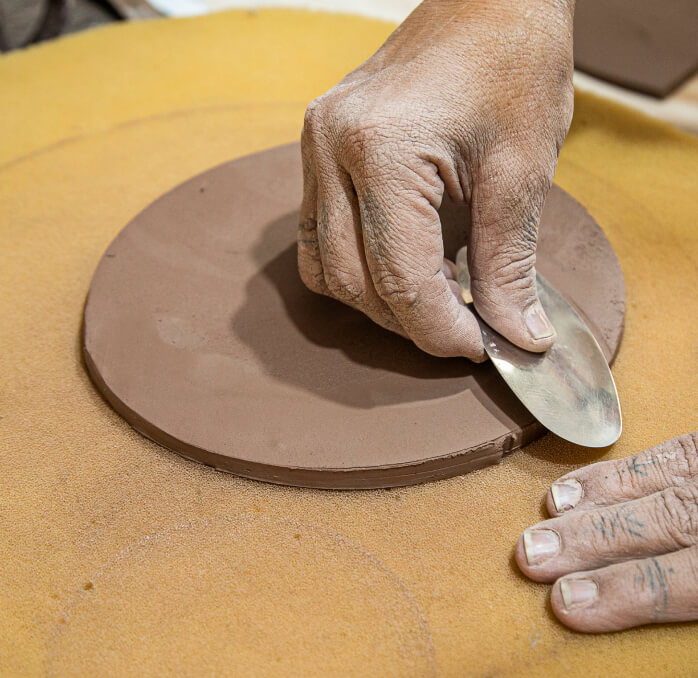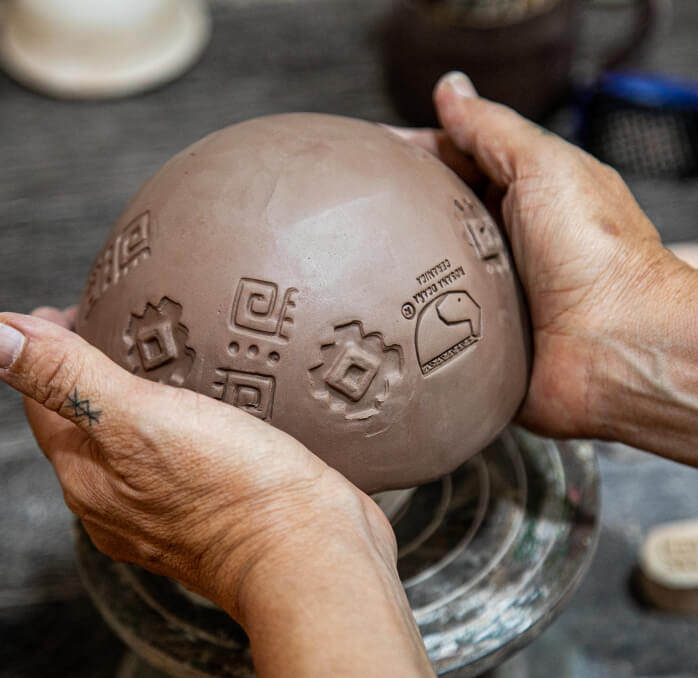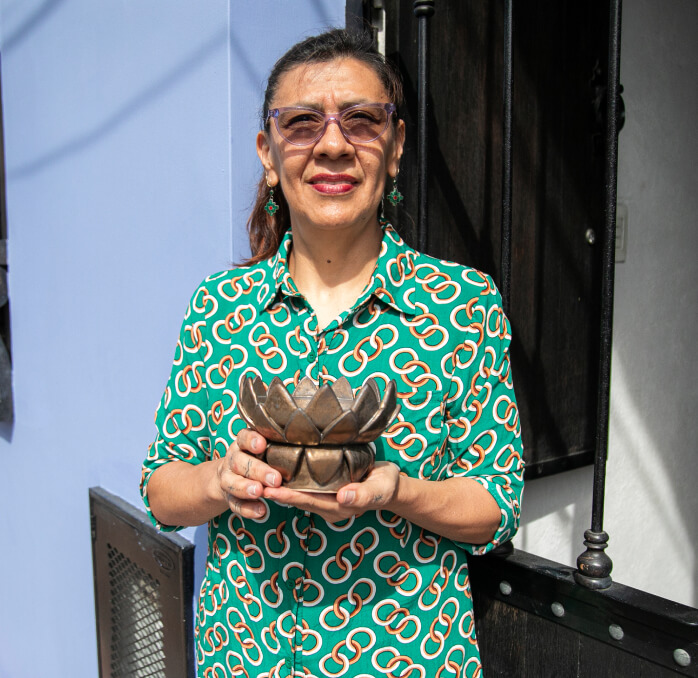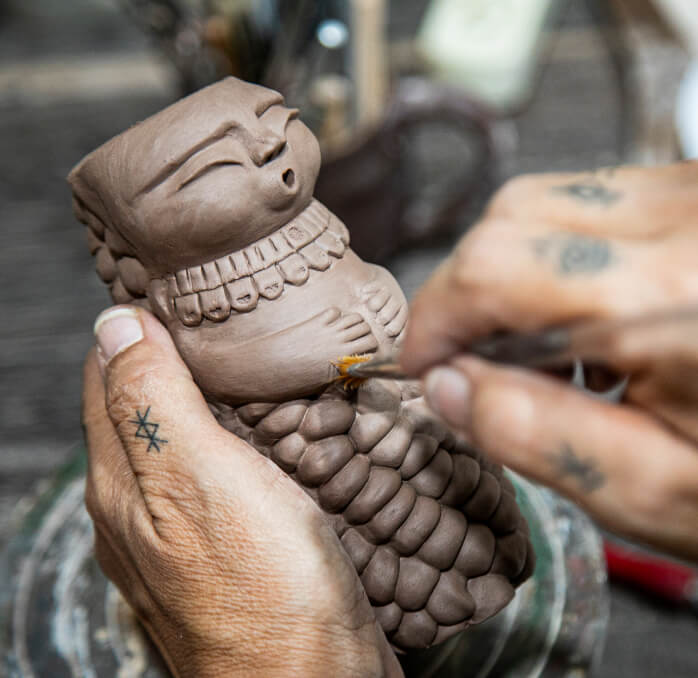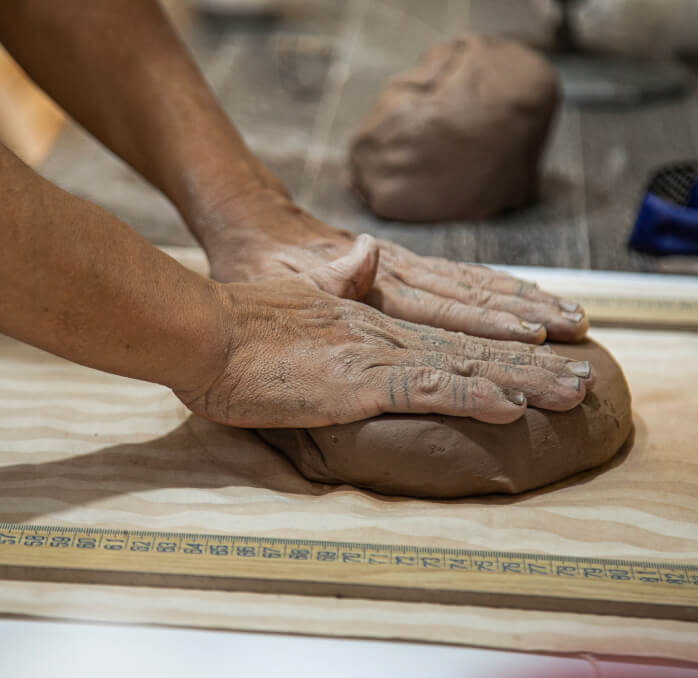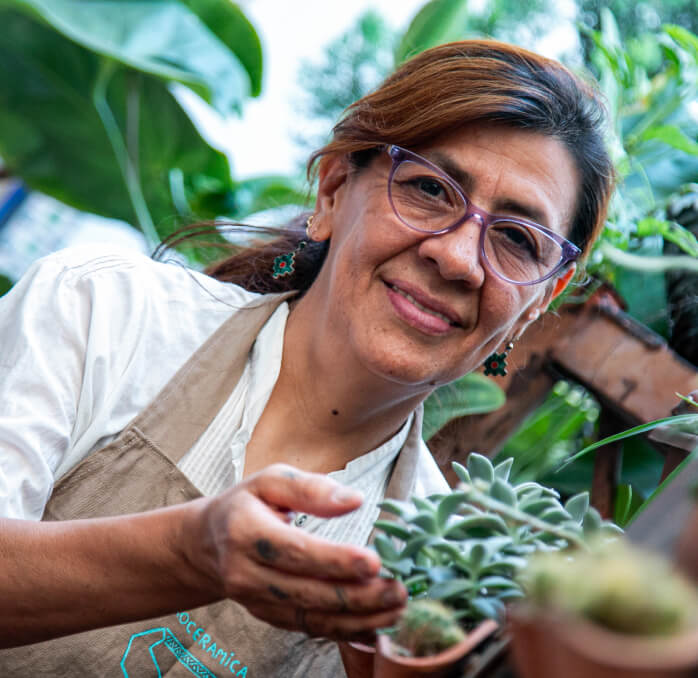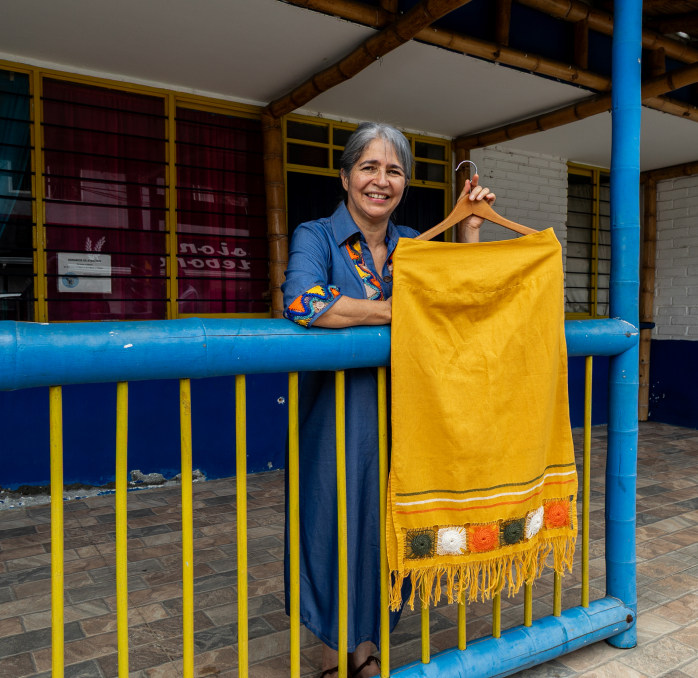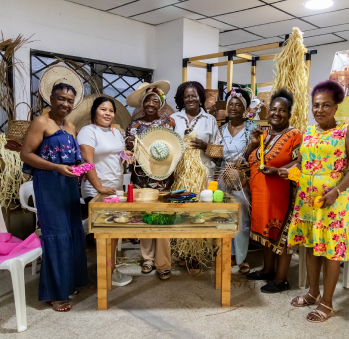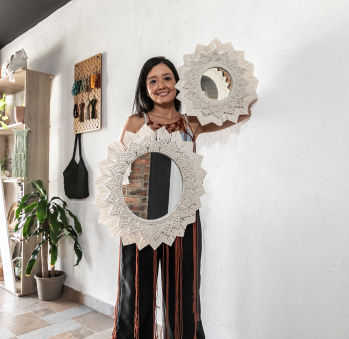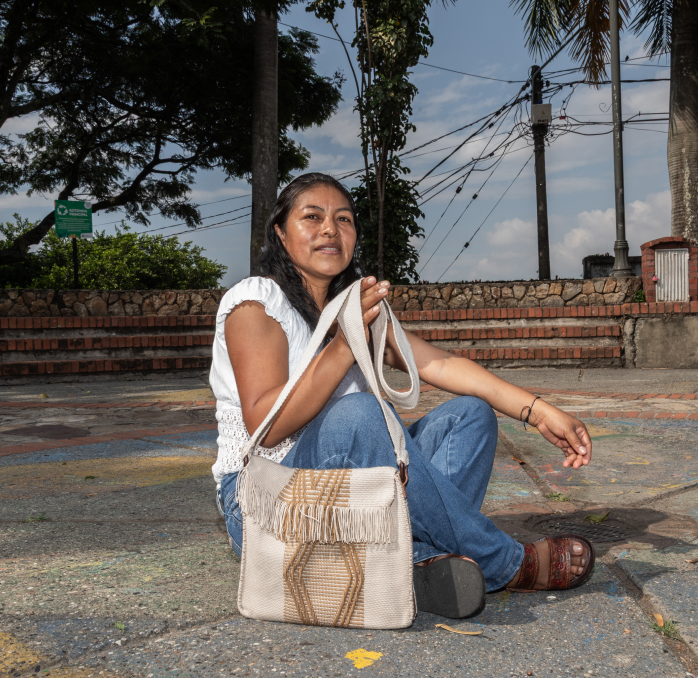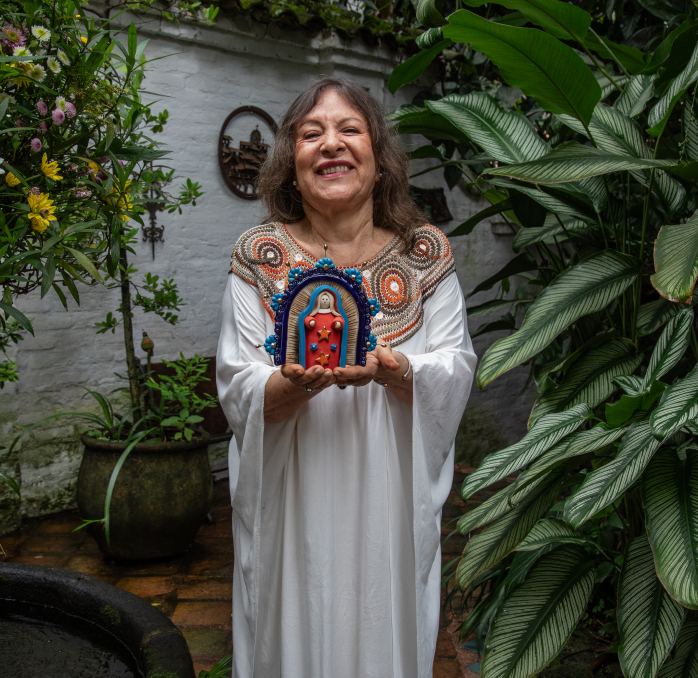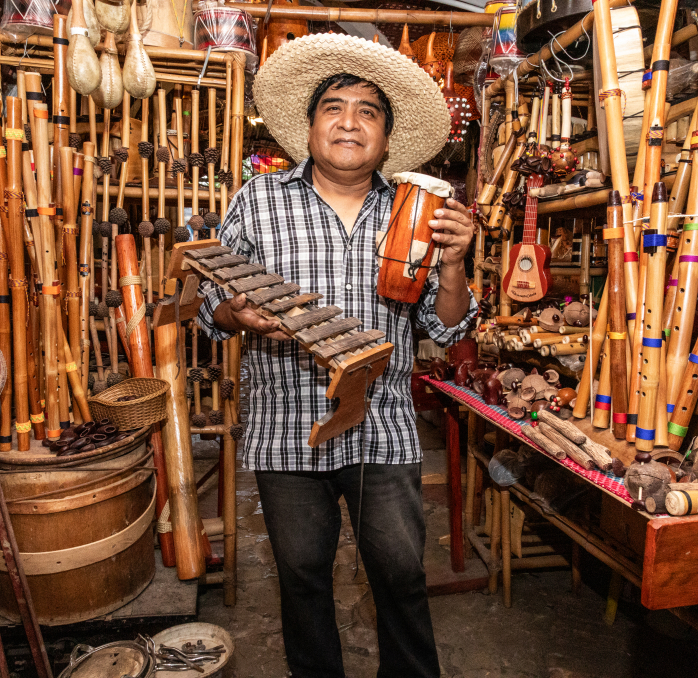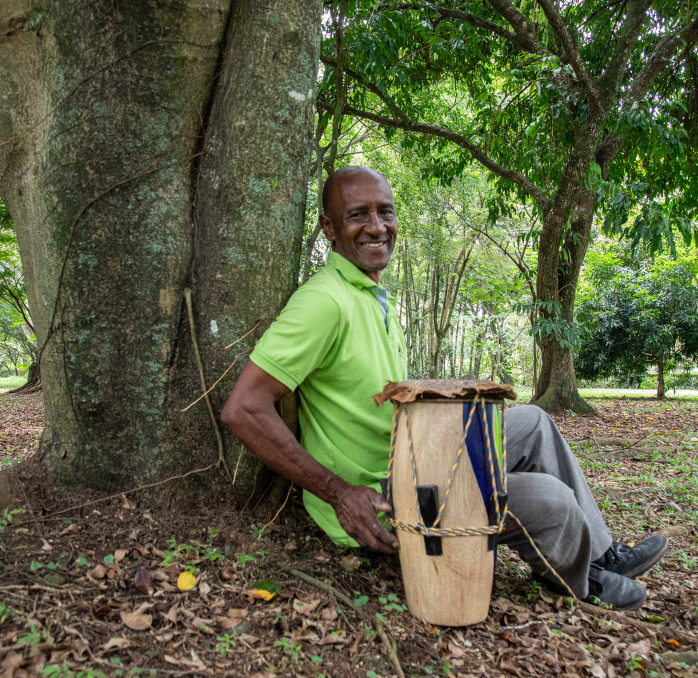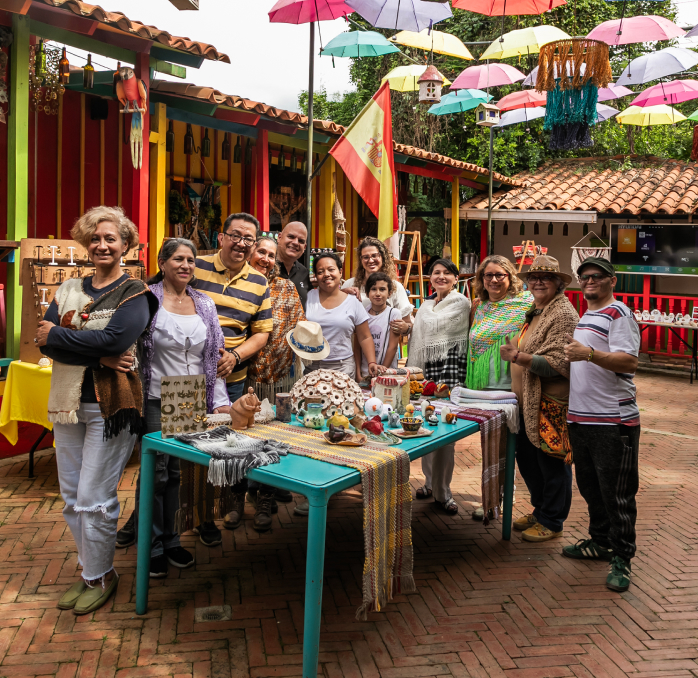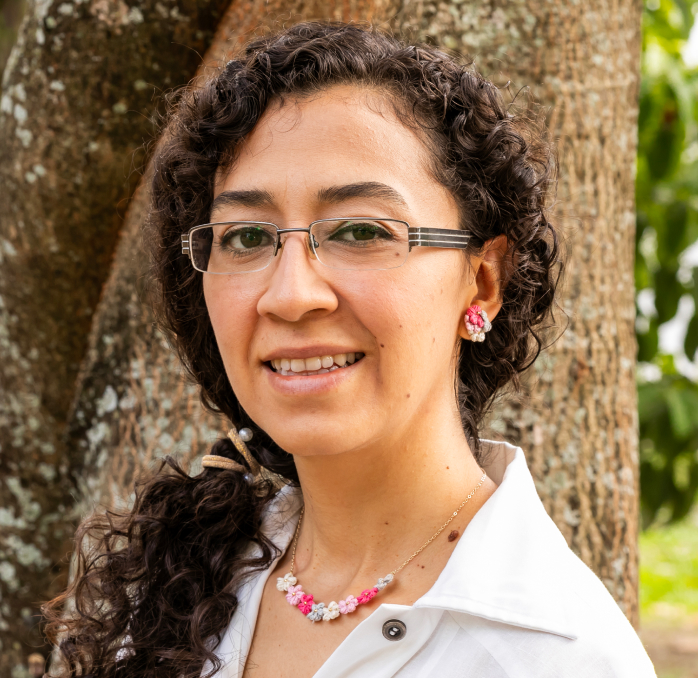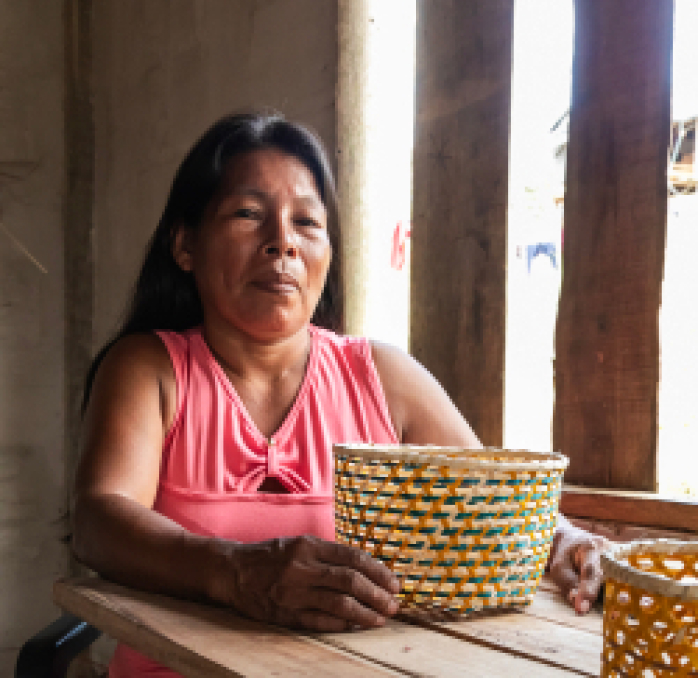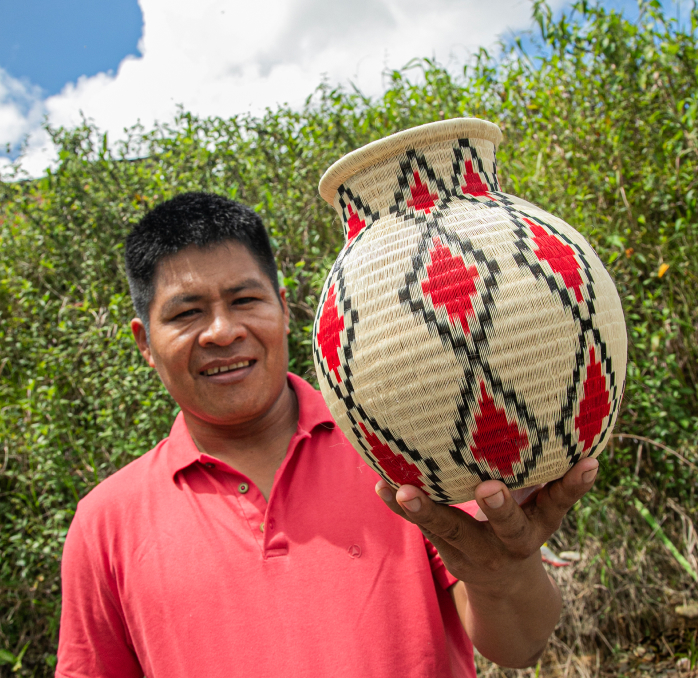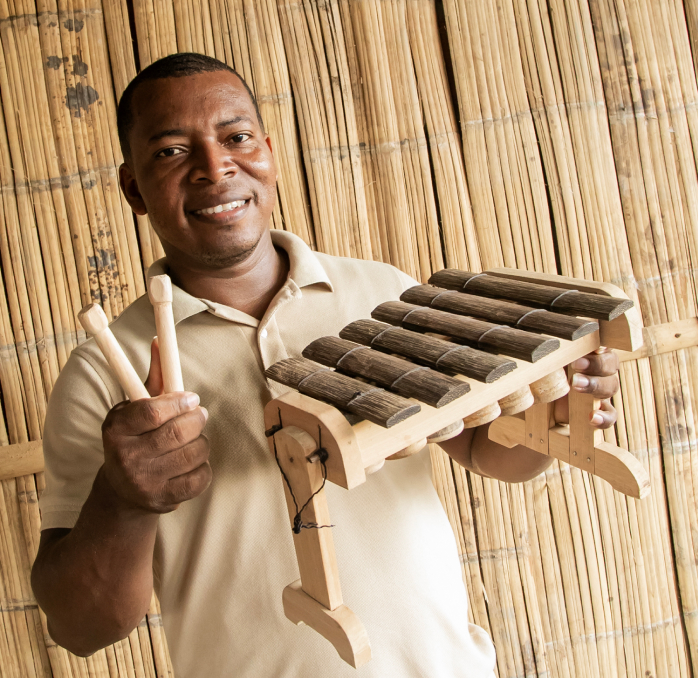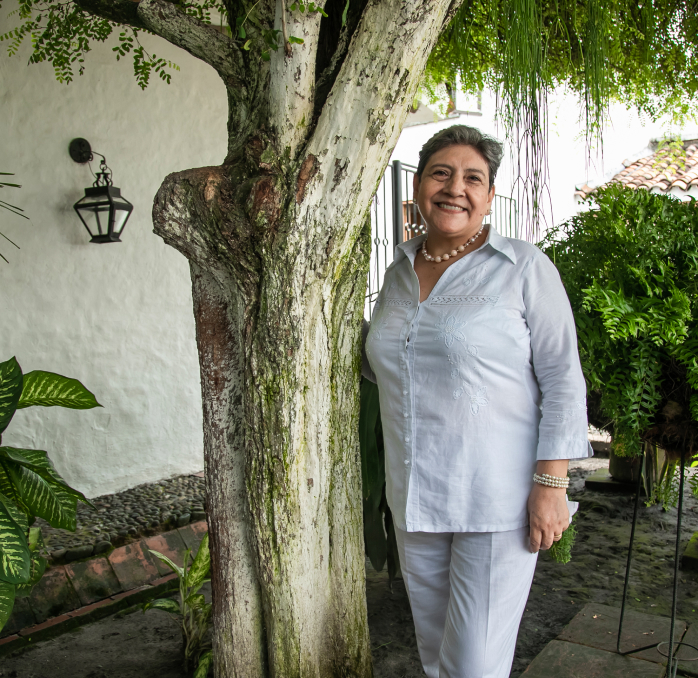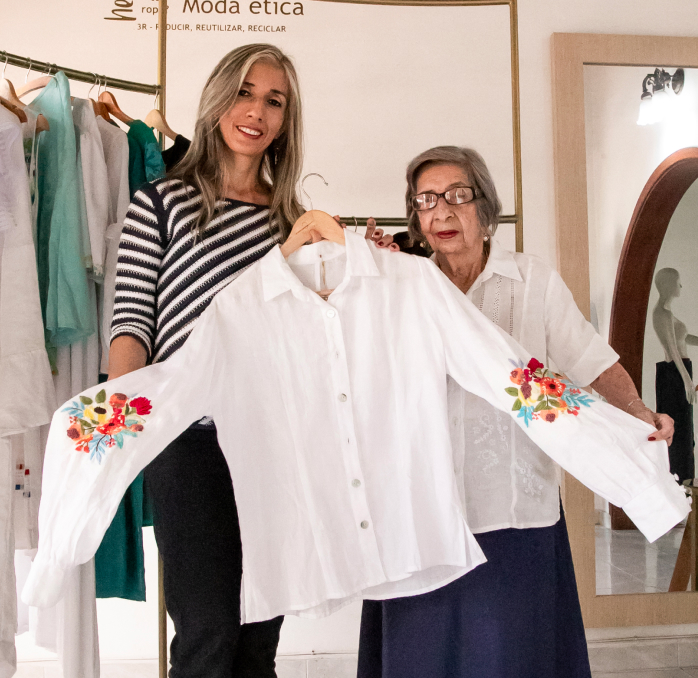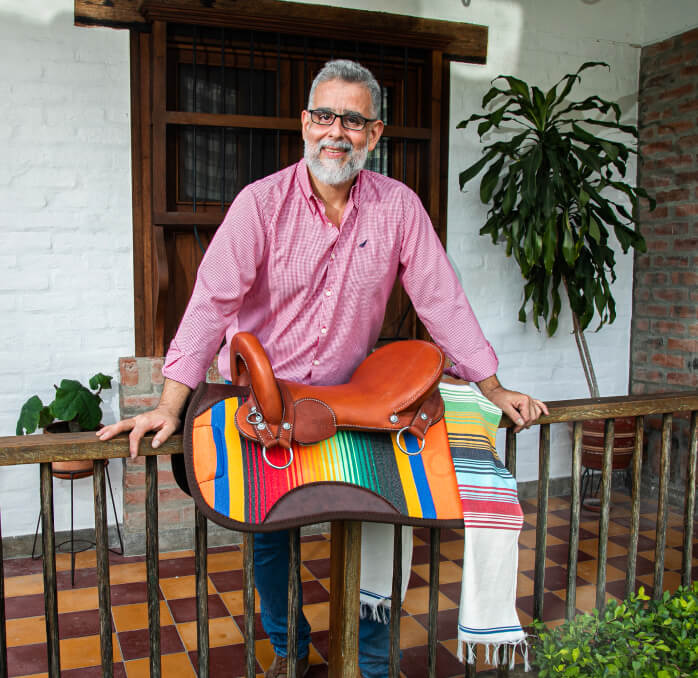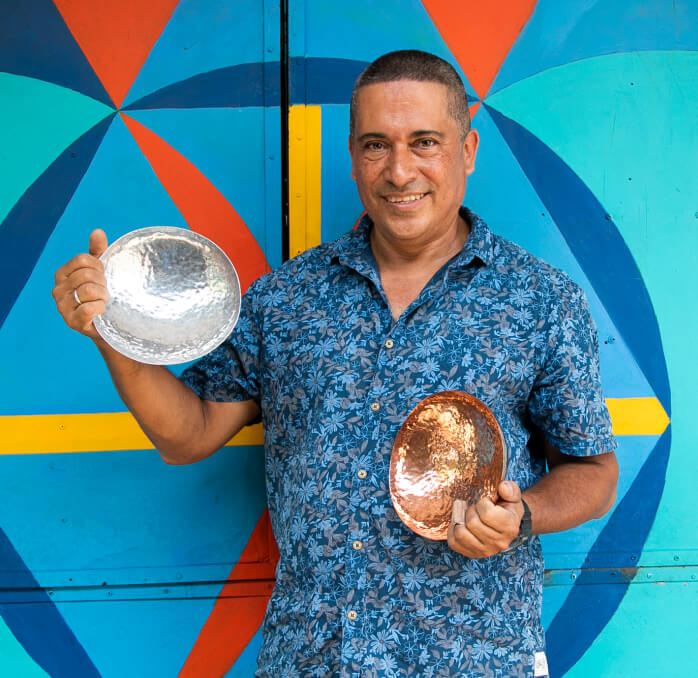Rosana Ocaña
Workshop: Taller Arteser
Craft: Alfarería y cerámica
Trail: Valle del Cauca route
Location: Cali, Valle del Cauca
Rosana Ocaña regards clay as a living and benevolent material that willingly transforms into many forms, as long as one respects and wields it skillfully, as it responds to each of our impulses. Rosana has worked with it for 30 years and knows that, most of the time, the outcome of a piece depends on the mood she arrives with. Clay demands patience and respect for its rhythms and processes. Through her diverse array of students, Rosana imparts the wisdom that certain aspects cannot be hurried, and ceramics demand time—time for working with the material and time for mastering the craft itself.
Fortunate to attend a school in Pasto, Nariño, that extended education beyond high school and offered intermediate degrees, Rosana undertook a three-year technical course in ceramics, which served as her initiation into the art from an early age. Clay had captivated her since childhood, when she played with the mud collected from a creek near her family’s country house. Following her technical studies, she married Oscar Esteban Martínez, a visual artist, and together they established a studio. While Oscar sculpted the pieces, Rosana took charge of the casting process. Later on, they moved to Cali, where they started imparting sculpture and ceramics courses.
Years of teaching have acquainted Rosana with the unrealistic expectations people have when they first approach ceramics. She encourages her students to trust the process. For instance, when teaching the throwing wheel technique, she reminds eager learners that before being able to make a functional piece, they must master various prior steps. Building the necessary stability for centering, opening, and pulling the clay on the wheel requires patience. A combination of technique and individual skills is vital—just as each person holds a spoon in a unique manner, they must discover the optimal way of throwing with their unique hands. It’s a matter of patience. This principle holds true for the coiling technique too, employed for sculpting, and building cups and vessels. Although coiling seems simple, a common regression occurs among Rosana’s adult students. Many of them have forgotten the mechanics of it. Excessive pressure can cause the clay to turn into a block or overly dry due to the warmth of their hands. Striking the equilibrium between clay moisture and hand temperature is crucial, as well as understanding how much pressure to apply, as clay, despite its responsiveness, has its limits.
More recently, Rosana, attuned to the intuitive and almost mystical knowledge necessary to grasp clay fully, crafted her renowned burners. During the pandemic, while confined to her studio, she conceived the idea of creating burners using a mold shaped like corn for its base. These vessels became platforms for burning incense, sage, and lignum vitae. When she was a child and played with the creeks mud, she also went to church with her mother’s family and participated in processions and catholic ceremonies where incense filled the air. Today, these burners serve individual rituals. A womb-like, chalice-shaped burner is meant to be used by women, while a phallus-evoking, pan-like burner is meant for men. Through these burners, Rosana has deepened her insight into their forms and functions, discovering that burners can crack in response to the intentions of those holding them. The burners, it seems, mirror the user’s impulses—a phenomenon that perhaps resonates with Rosana’s own respectful and patient approach to clay.
The sculpting of each piece by her own hands remains Rosana’s favorite part, culminating in her gas kiln’s revelations. She crafts pieces employing diverse techniques—throwing wheel, coil building, pinching, hand building, and the recently learned palette technique from Peru. With a predominance of female students, many of them run their own workshops nowadays. Rosana finds fulfillment in connecting her clients with her apprentices, for instance, when they are looking for custom made tableware. She has never lost contact with her family of students, who still come to her whenever they have an inquiry.
Craft

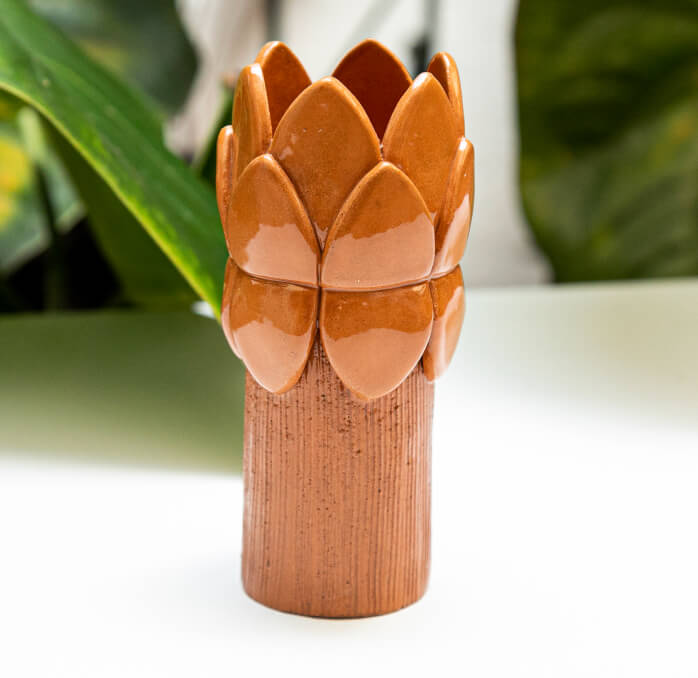
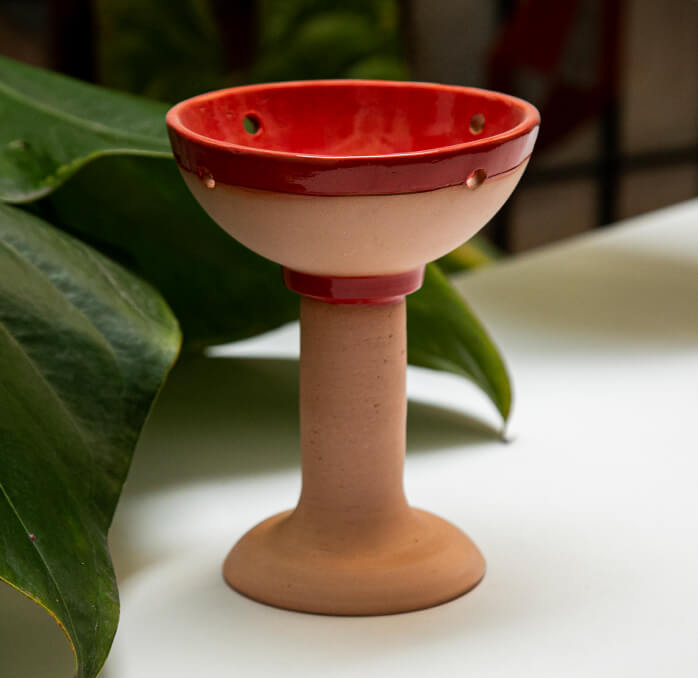
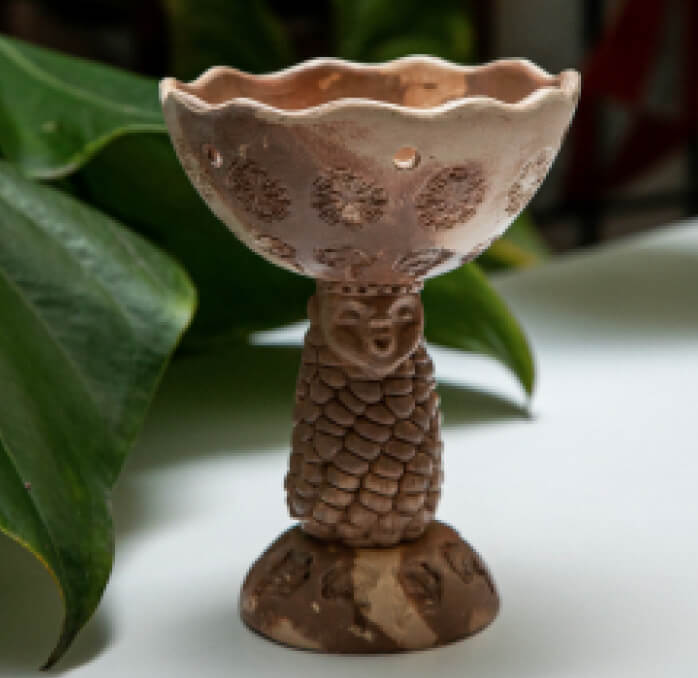

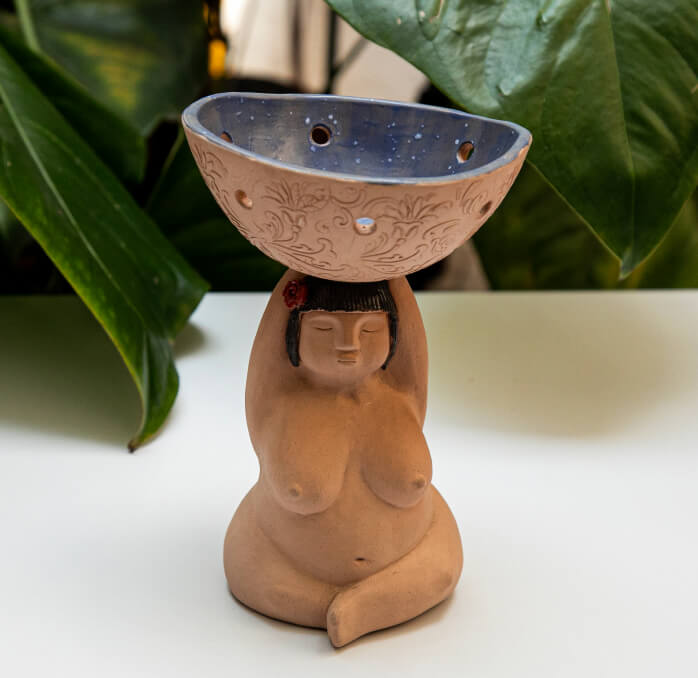








Artisans along the way
Artisans along the way
No puede copiar contenido de esta página








































